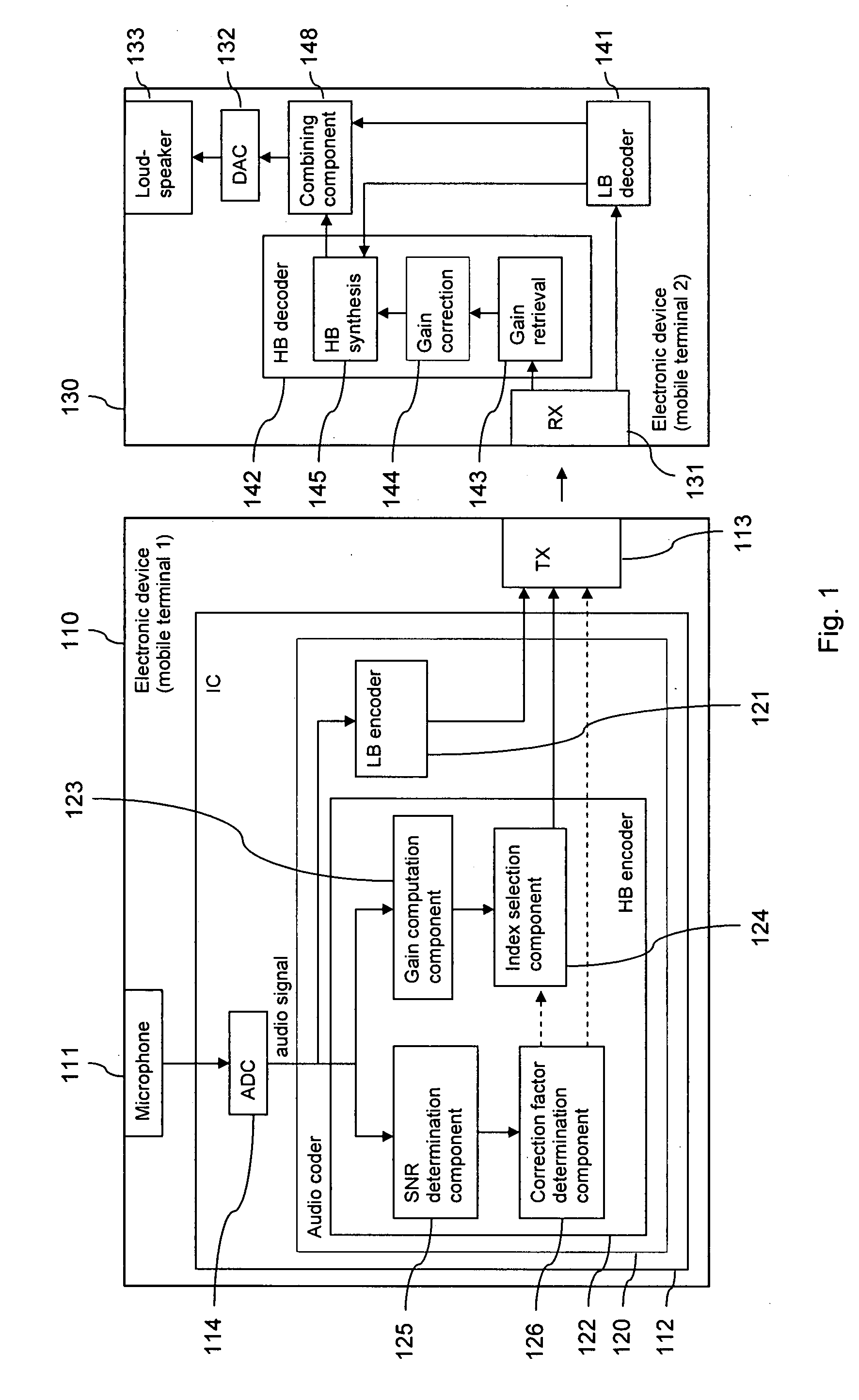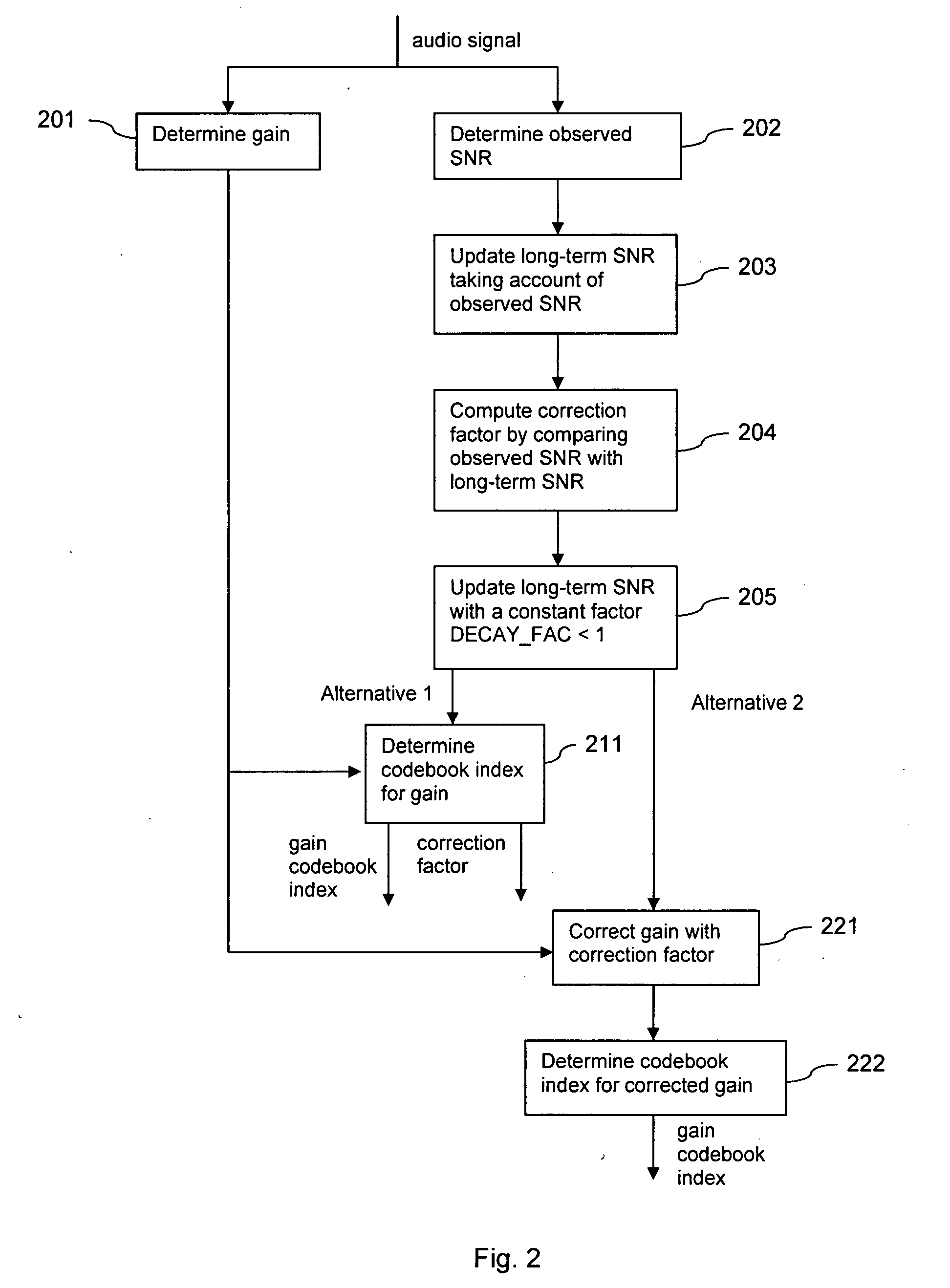Split-band encoding and decoding of an audio signal
a split-band encoding and audio signal technology, applied in the field of split-band encoding and decoding of audio signals, can solve the problems of introducing irritating high-frequency distortions to the output, affecting the quality of speech, so as to achieve clean speech, the speech classification algorithm more often makes an incorrect unvoiced classification under background noise than the one made by the speech classification algorithm
- Summary
- Abstract
- Description
- Claims
- Application Information
AI Technical Summary
Benefits of technology
Problems solved by technology
Method used
Image
Examples
first embodiment
[0046]FIG. 1 is a schematic block diagram of a system, which enables a high band gain correction in a split band coding approach in accordance with the invention.
[0047]The system comprises a first electronic device 110 and a second electronic device 130. The system could be for instance a mobile communication system, in which the electronic devices 110, 130 are mobile terminals.
[0048]The first electronic device 110 comprises a microphone 111, an integrated circuit (IC) 112 and a transmitter (TX) 113. The integrated circuit 112 or the electronic device 110 could be considered as an exemplary embodiment of the apparatus according to the first aspect of the invention.
[0049]The integrated circuit 112 comprises an analog-to-digital converter (ADC) 114 and an audio coder portion 120. The audio coder portion 120 comprises a low-band (LB) encoder portion 121 and a high-band (HB) encoder portion 122. The high-band encoder portion 122 further comprises a gain computation component 123, an ind...
second embodiment
[0093]FIG. 6 is a schematic block diagram of an exemplary electronic device 610, which enables a high band gain correction in a split band coding approach in accordance with the invention.
[0094]The electronic device 610 could be again for example a mobile terminal of a wireless communication system. The electronic device 610 could be considered as an exemplary embodiment of the apparatus according to the invention.
[0095]It comprises a microphone 611, which is linked via an analog-to-digital converter 614 to a processor 621. The processor 621 is further linked via a digital-to-analog converter 632 to loudspeakers 633. The processor 621 is further linked to a transceiver (TX / RX) 613, to a user interface (UI) 615 and to a memory 622.
[0096]The processor 621 is configured to execute various program codes. The implemented program codes comprise an audio encoding code for encoding a lower frequency band of an audio signal and a higher frequency band of an audio signal. The implemented prog...
PUM
 Login to View More
Login to View More Abstract
Description
Claims
Application Information
 Login to View More
Login to View More - R&D
- Intellectual Property
- Life Sciences
- Materials
- Tech Scout
- Unparalleled Data Quality
- Higher Quality Content
- 60% Fewer Hallucinations
Browse by: Latest US Patents, China's latest patents, Technical Efficacy Thesaurus, Application Domain, Technology Topic, Popular Technical Reports.
© 2025 PatSnap. All rights reserved.Legal|Privacy policy|Modern Slavery Act Transparency Statement|Sitemap|About US| Contact US: help@patsnap.com



